
Subscribe to continue reading
Subscribe to get access to the rest of this post and other subscriber-only content.
choice perennials for the shade garden

Subscribe to get access to the rest of this post and other subscriber-only content.

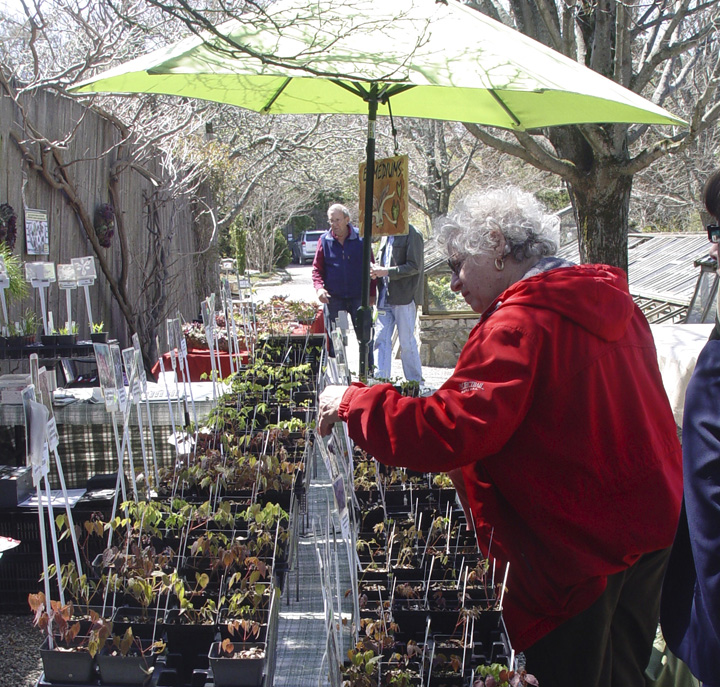
April 18, 2023
In disassembling my nursery with visions of retirement in my headlights, I am left with a smattering of saleable pots of many different species and varieties of Epimediums, many of which I do not normally bring to plant sales. I will be offering these odds and ends as well as customer favorites at four off-site plant sales this year. The first is the Alpine Plant Sale at Stonecrop Gardens in Cold Spring, NY on Sat. Apr. 29. I’ll be arriving a day early to give a talk at 5:30pm on Epimediums — Jewels of the Shade and will have a few plants available for sale to attendees. Next I will travel to the Sakonnet Plant Fair in Little Compton, RI on Sat. May 6. I didn’t attend this sale’s debut in 2022, but heard it was a great success, despite less than ideal weather. There will be even more vendors this year. If you plan to attend, including a visit to the nearby garden fantasy known as Sakonnet Gardens is a must (reservations required). Later in May, The Garden Conservancy is sponsoring an open day on May 21 at a charming, rural private garden, local to me– Swift River Farm in Petersham, MA where I will be selling epimediums alongside Primrose Hill Woodlanders. Then on Sat. Sept. 9, I will return for one last time to the Mid Atlantic Hardy Plant Society Fall Gardeners Market in Collegeville, PA. Click here for a list and details of all my upcoming sales and talks. I hope to see you at one or more of them. Please bring cash or check as I no longer can take credit cards.

As for the future of this website I intend to keep it available for the information it provides. My very talented webmaster Stefan Matei, is working on a new look. For now, I have listed descriptions of all of the plants– both Epimediums and companion perennials, that have been featured in the past. I also have an updated list of other mail order sources of Epimediums.
Learn about growing epimediums and their characteristics by scrolling through some of the blogs I have written in the past under the headings: About Epimediums (to learn about general characteristics) and Epimediums Up Close (where I talk about what I have learned growing them for the past 25 years). You can locate these tabs by scrolling down the home page. I will also continue to present an introduction to Epimediums powerpoint program called Epimediums– Jewels of the Shade, geared toward garden clubs and plant societies, both in-person and in Zoom format. Send me an email for more information about speaking to your group. Thanks to the many people who have supported this endeavor over the years and happy gardening.
Karen Perkins
Garden Vision Epimediums

August 26, 2022
Hot and dry has been the theme for the last couple of months, so I am so very glad that have seen the end of the Dog Days of Summer (July 3-Aug 11, according to the Farmer’s Almanac). My neck of the woods in north central Massachusetts is officially in a critical drought stage. You know that it is dry when you see plants showing the backs of their leaves. In looking over my Epimedium beds, I’ve noticed that the plants sited in several hours of sun with no irrigation have yellow, bleached-out foliage. Other than providing them with a well-drained, humus-rich soil, and a mulch of shredded maple leaves, I tend not to fuss over my epimediums during the growing season, other than to keep the beds weeded. I have held out on watering so far, but am now putting a sprinkler through its paces. I water one area a day for 3 hours, so as not to deplete my well and to make sure that the water penetrates deeply into the soil.

I also noticed that a few plants had several necrotic leaves. At first I attributed that to drought stress, but upon further investigation, I discovered that a vole has been making a meal of their underground woody stems.

Luckily, unlike with hostas, where the feasting voles usually leave only the stray dead leaves and their petioles behind, voles tend to tunnel below the epimedium and eat just the undersides of the woody underground rhizomes (stems).

I cut back the damaged foliage and re-set the clump in close contact with the soil, to re-establish the plant. Rehabilitation will take time, but by next spring I expect it to behave like a newly established plant.

Voles only occasionally munch the epimediums in my garden. If I re-set the rhizomes in contact with the soil, to date, I have never lost an entire plant to their feasting. Hostas and small species Iris seem to be their favorites in my garden.

For those of you who haven’t tired of adding plants you your garden yet, I am still taking orders for Quick Pick-Up at my Massachusetts nursery. Choose any day in September that fits your schedule to make your pick-up, and I will have your plants packed and ready to go, along with care instructions. Just visit the Home Page and go to the Catalogue pull down menu and select 2022 Web Catalog to see a listing of plants available for sale.
I have also added a few plant sales and epimedium talks to my fall schedule. On Sat. Sept. 10 I will be selling plants at the Massachusetts Master Gardener’s Fall Symposium in Waltham, MA. On Sunday, Oct. 2, I will be speaking to the Great Lakes Region Chapter of NARGS (North American Rock Garden Society) where I will also have epimediums for sale. Lastly on Sat. Nov. 12 (date still tentative), you will find me back in Ithaca, NY talking epimediums and selling plants to the Adirondack Chapter of NARGS.
I am also scheduled to speak to several groups in 2023 and will have plants for sale if the season allows. By then, technically, I will be retired, but will continue to promote and sell epimediums (cash/check only) through my talks. Click on the Plant Sales & Lectures tab for my up to date schedule. As always, if you are interested specific plants, contact me at least a week ahead of the event and I will make sure to bring them with me. I look forward to seeing many of you this fall!
Karen Perkins
Garden Vision Epimediums
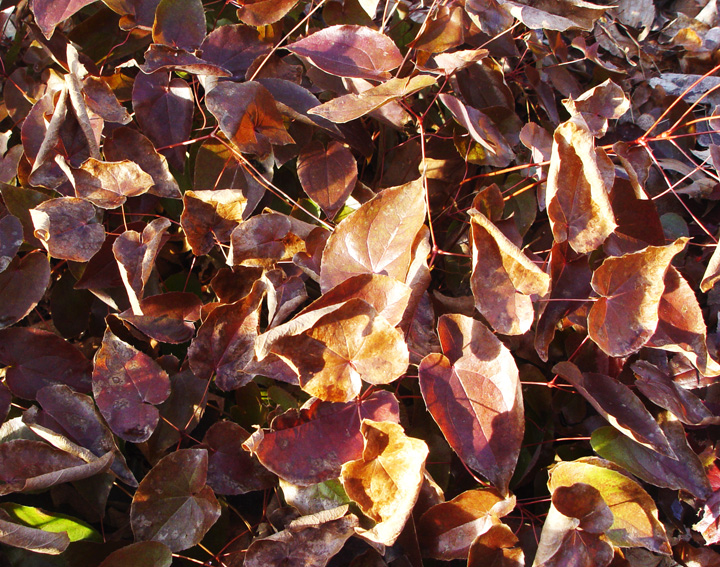

January 15, 2022
2021 was a blockbuster year for Epimedium sales. Even though it was my last year for mail order and my aim was to decrease my inventory, I ended up propagating vast numbers of plants just to keep up with demand. Now I know why those furniture stores advertise their “Going Out of Business” sales year after year! They are definitely on to something.
I plan to sell the bulk of my remaining inventory of potted epimediums in-person during my Open Nursery Days, May 4-22, Covid permitting. I have listed those varieties that I have in larger quantities in the Web Catalog. You may pre-order these for pick up during my Open Nursery Days. Other varieties that I have in small quantities are not listed, but will be available for sale as supplies last. I am accepting cash and check only at these sales. I will also be participating in a few other specialty plant sales in the region this year before I discontinue retail sales.
For those of you too far away to visit, I’ve compiled a list of mail-order sources that offer a good selection of epimediums. I’ve also listed a few that sell on-site only. This is far from a complete list, but they are sources which offer a wider variety than is generally available. Many of them have been customers over the years. Please feel free to let me know of other sources that you think I should include.
So far this winter we’ve had a roller coaster pattern of very warm and very cold temperatures, but very little snow. I took a walk around the nursery shortly after the new year to see how the evergreen epimediums were faring. Here’s what I found in my Massachusetts garden (USDA hardiness Zone 5b).

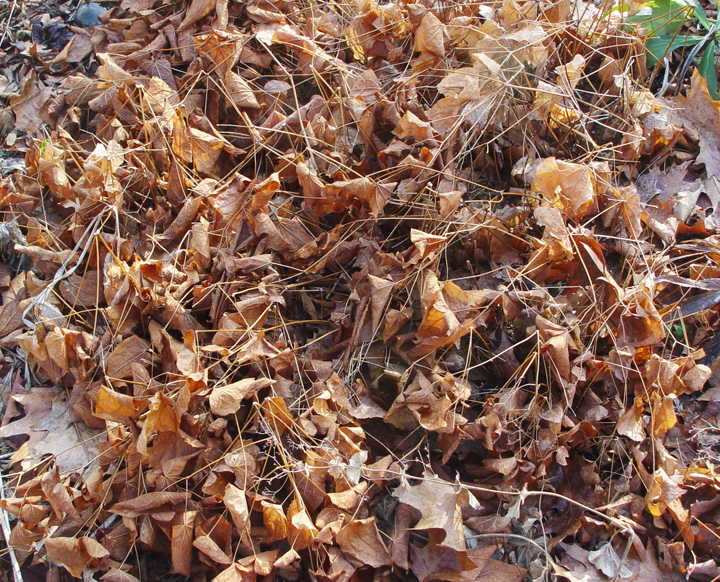




Unless still attractive in spring, remove the previous year’s leaves before the new growth emerges to avoid damaging the tender young stems. If you leave cutback too long, or just don’t have the time, leaving the previous year’s growth intact can encourage the growth of larger/taller plants with more robust leaves and flower scapes. The new growth typically extends up and above the old growth, and if desired, the latter can be removed later, after the new growth matures.
If you would like to include some evergreen Epimediums in your garden, check out Find Plants/By Growth & Culture/Evergreen on the home page. There you will find a list of good candidates that will add color and texture to your winter landscape.
Karen Perkins

February 2021
A great big thanks to all of my customers who, despite the trials and tribulations of living through the last year in a pandemic, have helped this small business to survive. I am so grateful for your support. 2020 brought with it many changes. It was my first year without a print catalog, my Epimedium talks turned into a virtual Zoom format, and all in-person plant sales were cancelled, so that all sales were done via mail order or quick pick up at the nursery. As it turned out, it was a good year to discontinue printing a catalog, as many gardeners unfamiliar with Epimediums found themselves with more time on their hands, discovered my website and became new customers. This influx of orders from new customers alone nearly made up for the loss of in-person sales. Last spring’s Epimedium display was also marred by damaging late spring frosts, so those of you who planned to visit during my Open Nursery Days didn’t miss a whole heck of a lot.

Looking forward to this spring I have added a few new plants to my offerings and FOUR themed collections this year, including one of companion perennials that bloom concurrently with Epimediums. In addition, with all of my Epimedium talks for plant groups being in Zoom format now, you have the opportunity to participate, no matter your location. Just email me your interest (karen@epimediums.com) and I will send you the link to join the program. I also have made some decisions regarding the nursery over the last year, and have a couple of announcements to make.
In light of the current virus situation, and the fact that most of my customers, like myself, are older, I feel compelled to do my part to keep everyone as safe as possible. With that in mind, I am cancelling my annual Open Nursery Days for 2021. All sales of plants will be done through mail order or a quick pick up at the nursery, which worked very well last year. To date, I am still awaiting word regarding my usual off-site in-person plant sales. I will post any new information as soon as it becomes available.
It is with some sadness, but also great excitement that I announce my plans to begin ramping down the nursery, with its ultimate closure at the end of next year (2022). This will be my last year to offer Epimediums via mail order. Next year, I will sell in-person only, at my Open Nursery Days during May and at my regular off-site sales, coronavirus permitting. I have come to this decision for many reasons, not the least important of which is that I have decided that it is time for a new adventure. In semi-retirement I hope to have the time to enjoy the little things in life– like having the time to visit OTHER people’s gardens in the spring! I appreciate all of the kindness and support that you have offered me over these last 20+ years. I love working with the plants, but it has been the people that have made my work really special.
I hope that the timing of this announcement allows you to plan a strategy for obtaining all of the Epimediums on your wish list, or even a visit to the nursery in 2022. Stay warm, stay healthy, stay safe. Thank you all again for your kind support over the years, through your personal notes, phone conversations, or meeting up with you at sales and symposiums. Spring will be here soon… I can hear it in the songs of the birds.
Karen Perkins
Garden Vision Epimediums


Published April 2016
Epimediums can be drastically affected by fickle spring temperatures because they are such early bloomers, emerging as soon as the frost is out of the ground. Unseasonably early spring warmth pushes the new growth into overdrive, and then sudden, hard frosts can fry it all up into a pile of withered stems. Most years it is not much of a problem, but then there are years like the present.
Lately we have been riding a roller coaster of temperature changes in the Northeast, with warmth coming many, many weeks earlier than normal, pushing these early bloomers into premature growth. Now, in early April, we’ve had 4 days of lows in the mid-teens. Luckily we’ve also had recent snowfall, which provided nearly 6-8″ of protection, hallelujah! I think I was the only person I’ve encountered who was grateful rather than annoyed about it.
I have tried to lessen any damage to the plants I have in pots by ignoring the temptation to uncover my cold frames early (much to the chagrin of my southern customers). Normally I open them up in mid-April since our frost free date doesn’t arrive til the end of May. In observing my Epimediums yesterday after the snow had melted under rising temperatures and warm rain, I found that some had weathered the trauma better than others, but most looked unscathed. Here’s my secret:
I keep my plants as dormant as I can, for as long as I can, until the weather settles in spring.

When I cut back the old foliage in either fall or early spring, I mulch the roots with 2″ of chopped leaves (or any other lightweight mulch appropriate for perennials), and sprinkle a lighter covering of this ‘leaf confetti’ over the crowns of each plant. This keeps the soil cool/frozen until the weather moderates. Even covering them in early winter with the branches of your discarded holiday tree will give added protection.
Another trick to slow their eager, early emergence is to plant them where the spring sun does not reach, such as on the north side of the woods, a shrub border, or your house. I have my entire stock of overwintering pots in cold frames located on the north side of a woodland, whose shade serves to keep the plants dormant for longer than they would remain that way in a more open location.
A third method is to plant under the cover of a limbed-up evergreen tree or shrub that will give them a bit of overhead cover that moderates the temperature. My favorite way though, is my excuse for being a lazy gardener (in all fairness, I am not lazy, I just have LOTS of garden/nursery to cut back each year before the new shoots emerge).

Leave last year’s foliage along with the fallen leaf debris to moderate the effect that quickly changing spring temperatures have on the new buds. Leave it in place until the weather settles or you have a chance to clean it up and re-mulch the area in readiness for bloom. If you use this technique, keep a sharp eye on the weather — thank goodness for the advent of the 10 day forecast–how could I live without it?! Do not postpone cleanup for too long however, or you will have the impossibly tedious task of removing the tangle of old stems and dried foliage from the tender, brittle new shoots. If that happens, it may be best to let things be and have the two fight it out. You will end up with taller plants in any case. As you can probably guess, I have long since given up what the neighbors think about my garden in earliest spring.
If all else fails and you have the threat of a late, hard frost looming, an old cardboard box and a rock to weight it down works in a pinch– at least for your most prized specimens.

Even if your Epimediums do get freezer burn, all is not lost. The underground woody rhizomes of most will activate dormant buds that will continue on. They will emerge a little later and with a lesser floral show, but thankfully, after the weather has settled.
If there is one thing that I have learned in life, it is that Mother Nature is a power greater than myself, and it is best not to stress, but to roll with the punches and enjoy the ride. In other words, work smarter, not harder. If you can do that, it makes life much, much better.
With best wishes that your Epimediums have made it through spring so far unscathed. I am keeping my fingers crossed for more moderate spring temperatures from now on.
Karen Perkins
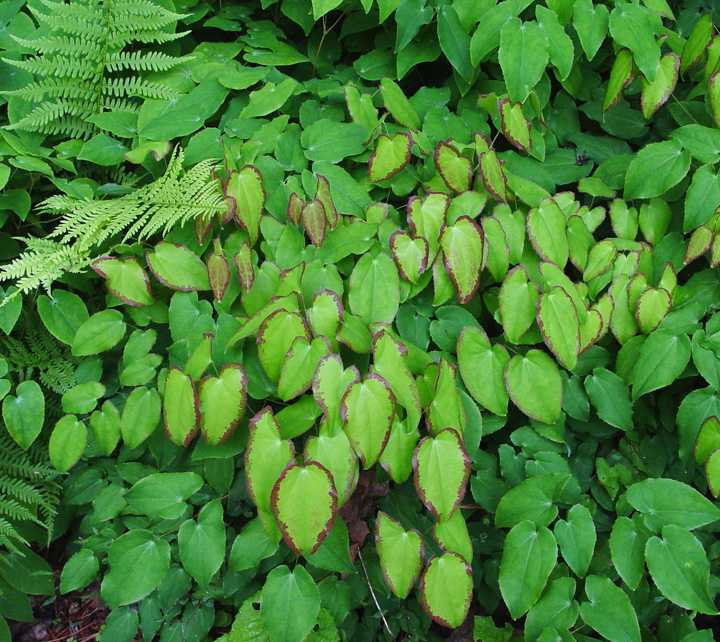

June 2022
The last of my Open Nursery Days were a great success this year with a steady stream of customers for the entire 19 day stretch. I met people who traveled from both near and far– from St. Louis, MD, Pittsburgh, northern VA, NJ, ME and Canada, to people from just down the road. A few customers returned multiple times. I was touched at how many people expressed their gratitude to me for introducing them to epimediums. I can’t tell you how good that makes me feel– to know that I have made a difference as I head on off into retirement from retail sales at the end of this year.
Even more incredibly, we had a visit from a moose who ambled up the road beside the nursery one Saturday morning. I just happened to notice him/her as I was putting cold frame supplies away in-between customers. I was lucky to get a few photos before an oncoming car frightened him/her into the woods.

As I write this in mid-June the last few epimediums blossoms are still hanging on. My colorful, sunny, open nursery has transformed into a cool, green shady grotto with the plants putting their energies into producing seed and a second growth flush.
During a long cool spring, we can get up to six weeks of colorful epimedium flowers and new spring growth in the garden before the plants green up for the summer. Each year the intensity of foliage color differs, depending on the weather. Cooler temperatures encourage robust, deeper colors in both the initial flush of spring foliage color and the second growth flush. This year the spring colors are fair to middlin’, as my dad would say, because of recent bouts of temperatures in the 80’s and 90’s.
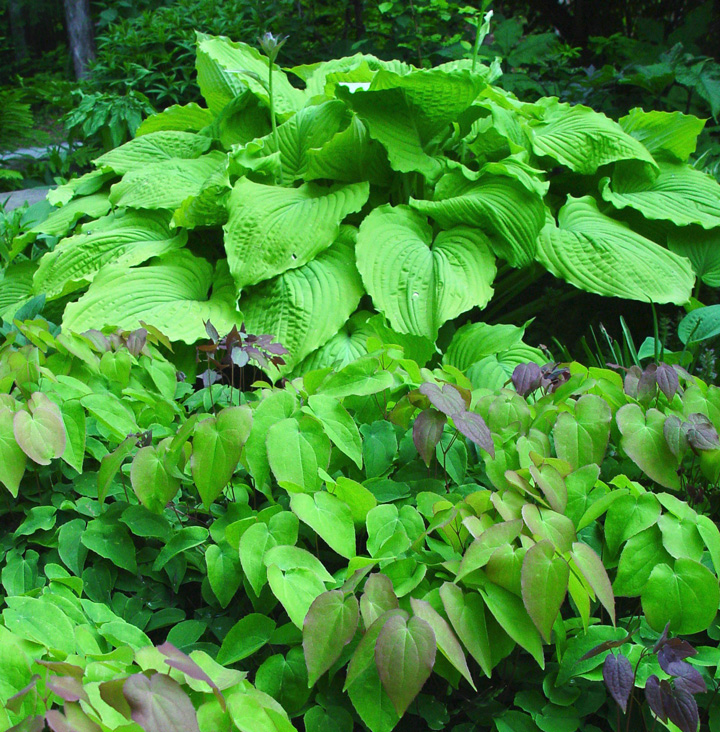
I recently returned from the North American Rock Garden Society‘s Annual Meeting in Ithaca, NY where I sold plants, met old friends/customers and made new ones. At that meeting, Darrell Probst, who originally started Garden Vision Epimediums, was honored with the Marcel Le Piniec Award which “is given to a nursery person, propagator, hybridizer or plant explorer who is currently actively engaged in extending and enriching the plant material available to rock gardeners.” He is one of the few people who truly ticks all of those boxes.
I welcome the newly arrived shade as I prepare for an upcoming plant sale next weekend. On Sat. & Sun., June 25-26; 10am-5pm I will be selling epimediums at O’Brien Nursery, in Granby, CT while the hostas are still at their peak. John O’Brien also offers a wide selection of woody plants and herbaceous perennials, for both shade and sun, in a beautiful woodland setting. HIS selection of epimediums is not too shabby either.
On Sat. Sept. 10, I will participate as a plant vendor as part of the Massachusetts Master Gardener Fall Symposium, at Bentley College in Waltham, MA. I will be both speaking at, and bringing a selection of epimediums for sale to the NARGS Great Lakes Chapter meeting at the Matthaei Nichols Botanical Gardens, Ann Arbor, MI, on Sun. Oct. 2.
If you are attending any of these events and are interested in specific varieties of epimediums, send me an email ahead of time with your plant request.
Once again I am offering a quick pick-up option throughout the entire month of September for anyone who wants to place an order and pick up their plants at the nursery in Phillipston, MA. Directions/details will be sent upon receipt of your paid order.
If you can’t make it to any of these plant sale events, I have compiled a list of other Mail Order Nurseries that offer a good selection of epimediums. If you know of any other nurseries that have an interesting assortment of epimediums for sale, please let me know and I can add them to the list. Happy growing!
Karen Perkins
Garden Vision Epimediums